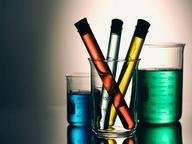
Common Names For Everyday Chemicals Quiz
Can you match the chemical names of these substances to their everyday names? Most of them can be found in the average home, though perhaps not quite all!
This is a renovated/adopted version of an old quiz by author jesseg
A matching quiz
by stedman.
Estimated time: 3 mins.